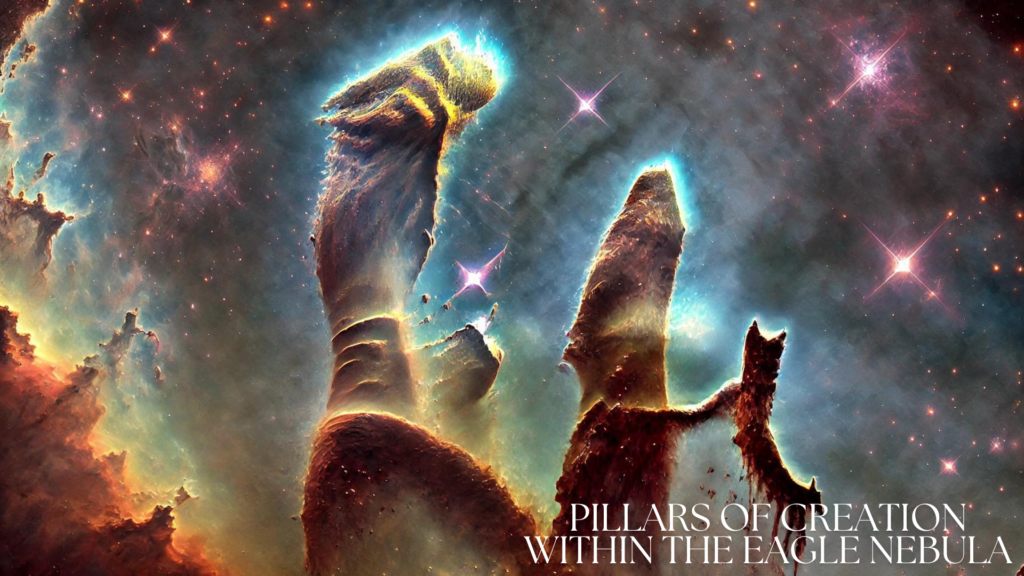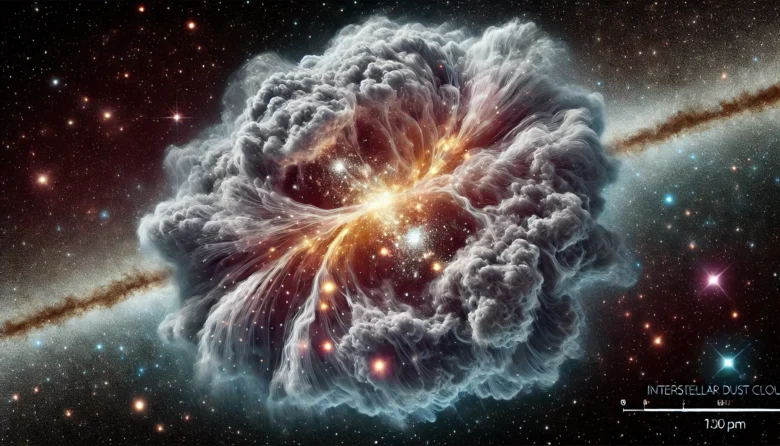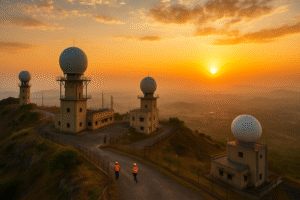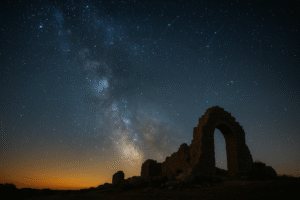When you think of outer space, what comes to mind? Perhaps vast emptiness, twinkling stars, or distant galaxies? But space isn’t as empty as it might seem. In fact, it’s filled with a fascinating mixture of gas, dust, and cosmic particles that play a crucial role in the universe’s ongoing evolution. One of the most intriguing components of this cosmic soup is interstellar dust clouds. In this blog, we’ll explore the dynamics of interstellar dust clouds, delving into what they are, how they form, and why they matter in the grand scheme of the cosmos.
What Are Interstellar Dust Clouds?
Interstellar dust clouds, also known as molecular clouds or nebulae (depending on their composition and size), are vast accumulations of dust and gas floating between the stars in a galaxy. These clouds are primarily composed of hydrogen, but they also contain small amounts of other elements like carbon, oxygen, and silicon. Despite the name, interstellar dust particles are incredibly tiny—about the size of smoke particles or even smaller.
These dust clouds might seem insignificant, but they play an essential role in the universe. They are the birthplaces of stars and planets, acting as cosmic nurseries where new celestial bodies are formed. Without these clouds, the universe as we know it wouldn’t exist.
How Do Interstellar Dust Clouds Form?
The formation of interstellar dust clouds is a complex process influenced by various cosmic phenomena. These clouds often form from the remnants of old stars. When a star reaches the end of its life cycle, it may go supernova, ejecting vast amounts of gas and dust into space. Over time, these ejected materials can gather into clouds under the influence of gravity.
Additionally, interstellar dust clouds can form from the slow, steady shedding of material from stars over their lifetimes. This material gradually accumulates and merges with other gas and dust in space, eventually forming a cloud.
These clouds are not static; they are constantly evolving. The dynamics within these clouds—such as temperature changes, pressure variations, and turbulence—cause them to collapse in certain regions, leading to the formation of new stars.
The Role of Interstellar Dust Clouds in Star Formation
One of the most critical roles of interstellar dust clouds is their contribution to star formation. When parts of these clouds collapse under their own gravity, the pressure and temperature at the core of the collapse increase, eventually leading to the birth of a new star.
This process begins when a region within a dust cloud becomes denser than its surroundings. Gravity pulls more material into this dense region, causing it to collapse further. As the collapse progresses, the core’s temperature rises, eventually reaching levels sufficient to trigger nuclear fusion—the energy source for stars. The result is a new star, with the remaining material around it forming a protoplanetary disk from which planets, moons, and other celestial bodies may emerge.
An excellent example of this process in action is the Orion Nebula, a massive interstellar dust cloud located about 1,344 light-years from Earth. The Orion Nebula is a region where stars are actively being born, offering astronomers a rare chance to observe star formation as it happens.
The Influence of Interstellar Dust Clouds on the Universe
Interstellar dust clouds do more than just birth stars; they also influence the light we see from distant stars and galaxies. As light from these distant objects passes through a dust cloud, the particles within the cloud scatter and absorb some of the light. This process, known as extinction, can make stars appear dimmer and redder than they actually are—a phenomenon often referred to as “reddening.”
Understanding the impact of interstellar dust on light is crucial for astronomers. By studying the way light interacts with these clouds, scientists can learn more about the composition and distribution of dust in space. This, in turn, helps them better understand the structure and evolution of galaxies.
Furthermore, interstellar dust clouds are rich in organic molecules—complex carbon-based compounds that are the building blocks of life. These molecules, including amino acids, have been found in interstellar space, suggesting that the basic ingredients for life are widespread throughout the universe. This finding has significant implications for our understanding of how life could develop in other parts of the universe.
Case Study: The Pillars of Creation
One of the most well-known images in astronomy is the “Pillars of Creation” in the Eagle Nebula (M16), showcasing towering columns of gas and dust, beautifully captured by the Hubble Space Telescope, which are a prime example of the dynamic nature of interstellar dust clouds.
The Pillars of Creation are regions of intense star formation. The dense gas and dust within the pillars are being pulled together by gravity, leading to the birth of new stars. However, these newly formed stars also emit powerful radiation that is slowly eroding the pillars, demonstrating the delicate balance of creation and destruction at play in interstellar dust clouds.
This image has not only captured the public’s imagination but has also provided astronomers with valuable insights into the processes that govern star formation and the evolution of dust clouds in the universe.

The Future of Interstellar Dust Cloud Research
As technology advances, our ability to study interstellar dust clouds improves. Upcoming space missions, including the James Webb Space Telescope (JWST), are expected to provide unprecedented views of these clouds, allowing scientists to observe the formation of stars and planets in greater detail than ever before.
Additionally, ongoing research into the chemical composition of interstellar dust clouds may offer clues about the origins of life. By understanding how complex organic molecules form and survive in these harsh environments, we can gain insights into the potential for life beyond Earth.
Conclusion
Interstellar dust clouds may seem like mere specks in the vastness of space, but they are anything but insignificant. These dynamic clouds are the cradles of stars and planets, shaping the universe and offering clues to the origins of life itself. As we continue to explore the cosmos, the study of interstellar dust clouds will remain a key area of focus, helping us unravel the mysteries of the universe.
So, the next time you look up at the stars, keep in mind that behind the sparkling lights lie vast clouds of dust and gas, quietly shaping the cosmos’s future.
Author’s Note:
The universe is full of wonders, and interstellar dust clouds are among the most fascinating. Writing about these cosmic wonders always reminds me of the deep connections within the universe, from the tiniest particles to the most massive galaxies. I hope this blog has sparked your interest in the dynamic world of interstellar dust clouds.
G.C., Ecosociosphere contributor.




